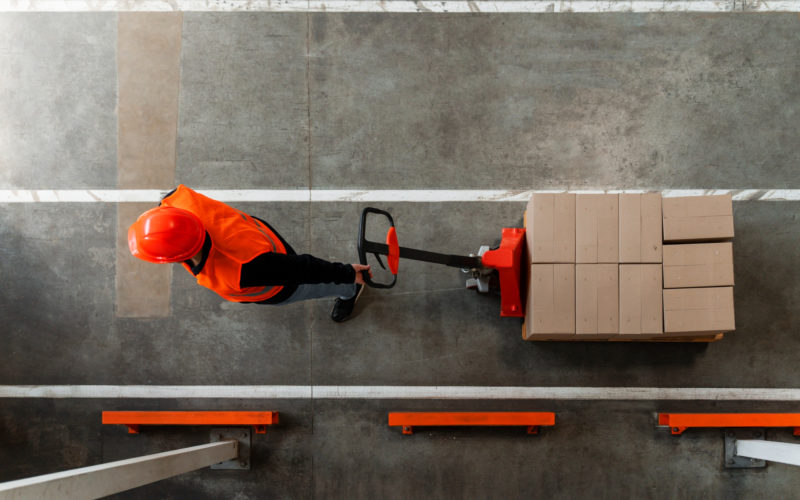In logistics and warehousing industries, efficiency is more important than ever. With rapid advancements in technology and an increasing consumer demand for faster order fulfilment, warehouse managers must balance speed and accuracy while maintaining operational costs. To meet these challenges, adopting the right tools is crucial. Among these tools, pallet jacks have become an essential piece of equipment in modern warehouses.
Pallet jacks are compact yet powerful equipment designed to handle the movement of pallets and heavy loads in tight spaces. At its core, a pallet jack consists of two forks that slide under a pallet, a hydraulic lifting mechanism, and a handle used for steering and operating the lift. Despite their relatively simple design, these machines have evolved to become an indispensable part of the warehouse ecosystem. They enable businesses to optimise their material handling processes, enhance productivity, and improve worker safety.
As warehouses and other associated logistics facilities continue to evolve with the demands of modern supply chains, adopting the right tools becomes increasingly important. In this article, we will explore the key benefits of pallet jacks and why they are essential in today’s warehouse environments.
1. They’re a Cost-Effective Investment
One of the most important reasons why contemporary warehouses should adopt pallet jacks is that they’re an incredibly cost-effective solution for material handling. As a basic type of forklift, their initial purchase price is quite low, making them accessible to businesses of all sizes. This affordability extends beyond the purchase price, as pallet jacks require very little in terms of maintenance.
Manual models, in particular, are extremely low-maintenance, needing only occasional servicing and minimal spare parts. Powered pallet jacks, on the other hand, require some upkeep, but the cost is still significantly lower than more heavy-duty types of forklifts.
Another major cost-saving benefit is their simplicity in terms of training. Unlike more advanced forklifts, which may require specialised training and certification, pallet jacks can be operated by most workers after a short training. This minimises the need for extensive orientation programmes.
2. They Have Versatile Applications in Warehouse Settings
Pallet jacks are also designed to be versatile, making them suitable for a variety of tasks within the warehouse environment. While their primary function is to move pallets and other heavy loads over short distances, they are incredibly adaptable and able to handle a broad range of applications. They are particularly useful for warehouses that deal with diverse products, from bulk goods to fragile items, due to their ability to safely lift and move goods without causing damage.
Moreover, pallet jacks can be employed for a variety of tasks beyond just transportation. They can assist with loading and unloading deliveries, stacking goods, or even inventory management tasks. This multi-functionality ensures that they play a central role in modern, efficient warehouse operations.
3. They Increase Efficiency and Productivity
Efficiency is at the heart of every warehouse operation, and pallet jacks contribute significantly to improving productivity. Pallet jacks enable workers to quickly move large amounts of goods with minimal effort, improving their overall speed in finishing their tasks.
The use of pallet jacks also leads to smoother workflows by minimising downtime. Their ease of use means that tasks like stock replenishment, product sorting, and transportation between different warehouse sections can be completed faster and more effectively.
In addition to improving worker productivity, pallet jacks also contribute to operational efficiency by reducing the need for unnecessary manual handling of goods. Instead of having to lift heavy items by hand, workers can move multiple pallets with a single piece of equipment. This reduces fatigue and the likelihood of errors, helping streamline warehouse operations.
4. They Enhance Safety in Warehouse Environment
Speaking of manual material handling, worker safety should always be a priority in any warehouse, and pallet jacks help improve safety by reducing the risk of injury associated with unassisted carrying and handling of goods. Lifting heavy pallets by hand can lead to back strain, muscle injuries, or even long-term health issues. By using pallet jacks, businesses can eliminate the need for workers to carry out physically demanding tasks, significantly reducing the risk of injuries and accidents.
Furthermore, modern pallet jacks are designed with ergonomics in mind. Many powered models feature ergonomic handles and controls to help workers maintain a comfortable grip and posture while operating the equipment. These design improvements contribute to greater worker satisfaction and reduce the physical strain associated with long shifts. Features such as anti-slip wheels, smooth braking systems, and stable lifting mechanisms also add to the overall safety of the equipment, ensuring that both operators and the goods they are handling remain secure during use.
5. They’re Available in Manual and Powered Models
As alluded to earlier, another standout feature of pallet jacks is their availability in both manual and powered models to suit different operational needs. Particularly, manual pallet jacks are ideal for smaller operations or environments where only moderate loads need to be moved over short distances. They are easy to use, require little maintenance, and are highly portable. Manual pallet jacks are also very useful in smaller warehouses or retail environments where space is limited, and the need for moving goods is frequent but not necessarily heavy.
On the other hand, powered pallet jacks are designed for larger operations where transporting heavier loads and over longer distances are common tasks. These models are equipped with electric motors that help lift and move goods with minimal effort, making them suitable for large warehouses or distribution centres where manual jacks would struggle to meet demand.
6. They’re Compact and Feature a Space-Saving Design
Space is a valuable commodity in warehouses, especially in urban environments, where rental costs can be high. Fortunately, pallet jacks are designed to take up minimal space while providing maximum utility. Their compact size allows them to navigate narrow aisles, reach tight corners, and move smoothly through congested areas.
Additionally, pallet jacks can be easily stored when not in use. Unlike larger machines, they don’t require dedicated storage areas and can be tucked away in smaller spaces, leaving more room for inventory or other equipment.
Pallet jacks are a fundamental tool for today’s warehouses. Their affordability, versatility, and ability to improve efficiency and safety make them a must-have for any business looking to optimise its operations. Whether used in small-scale environments or large distribution centres, the benefits of using pallet jacks are clear. So for any warehouse looking to improve its productivity and safety, adopting pallet jacks is a logical and beneficial step.












